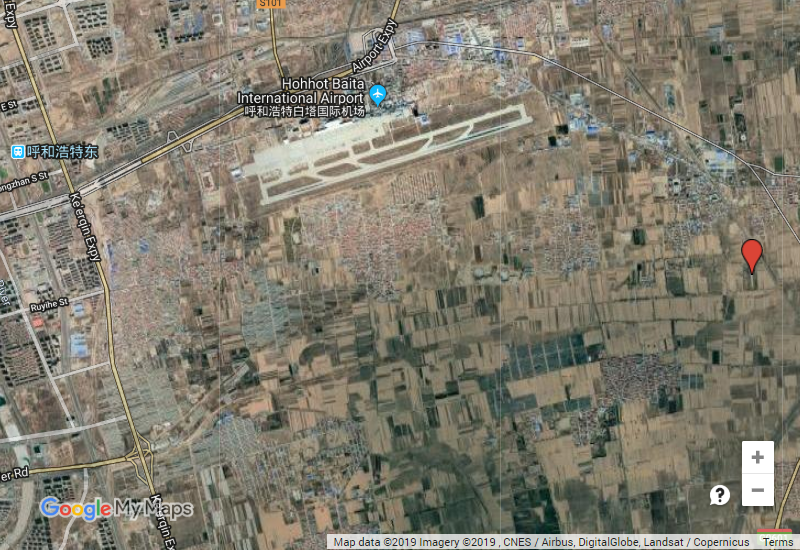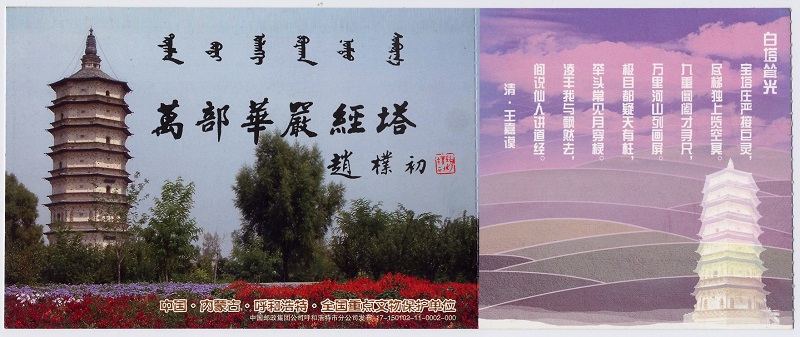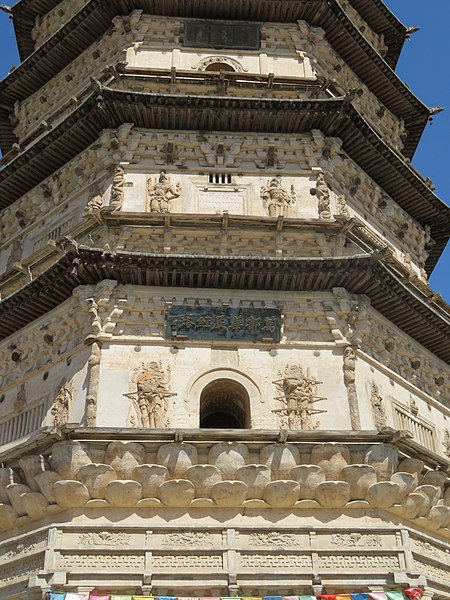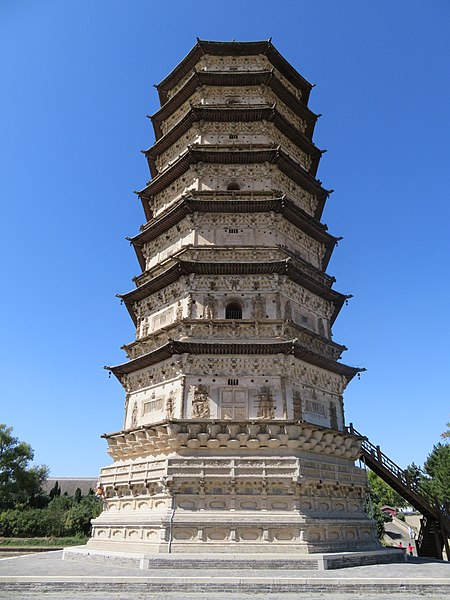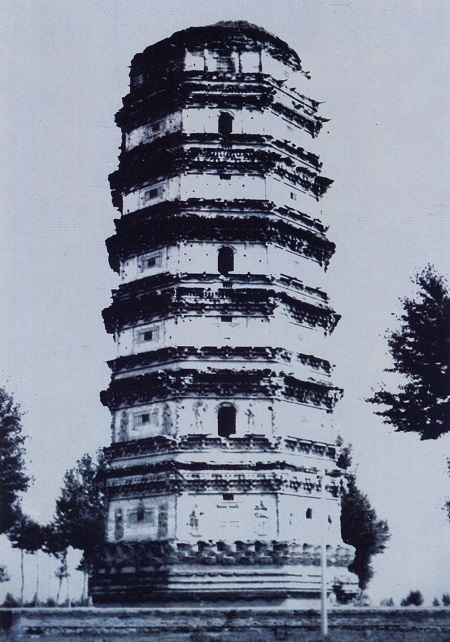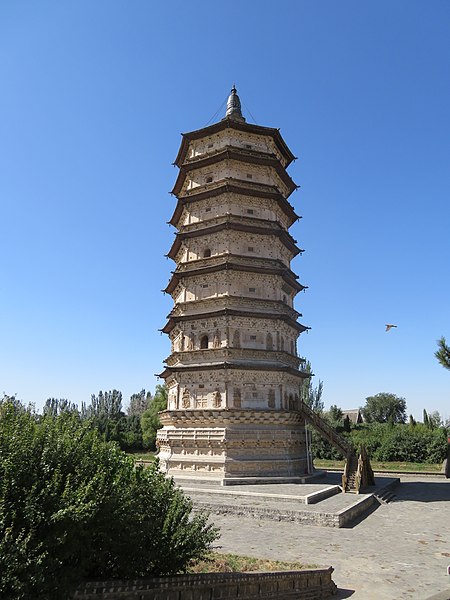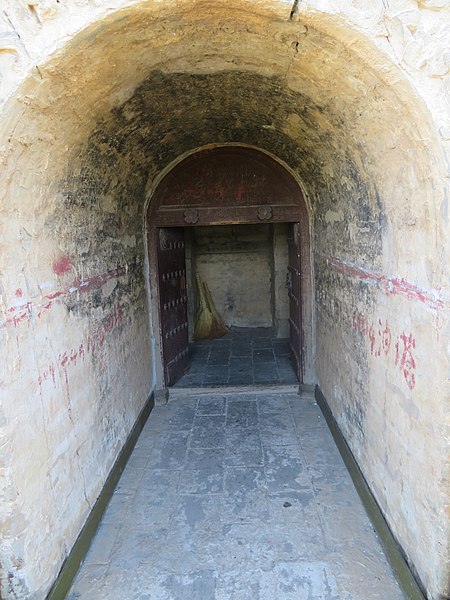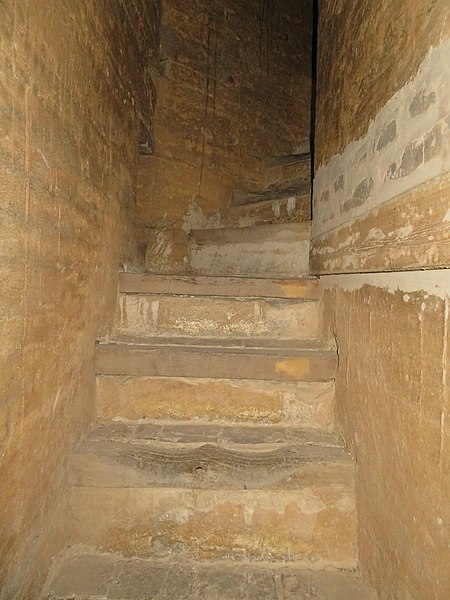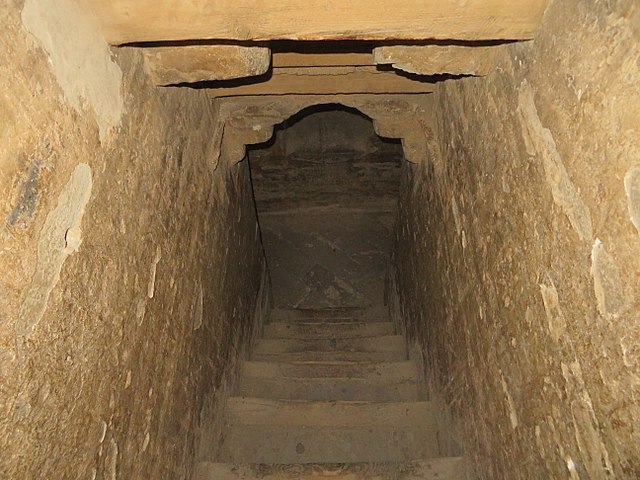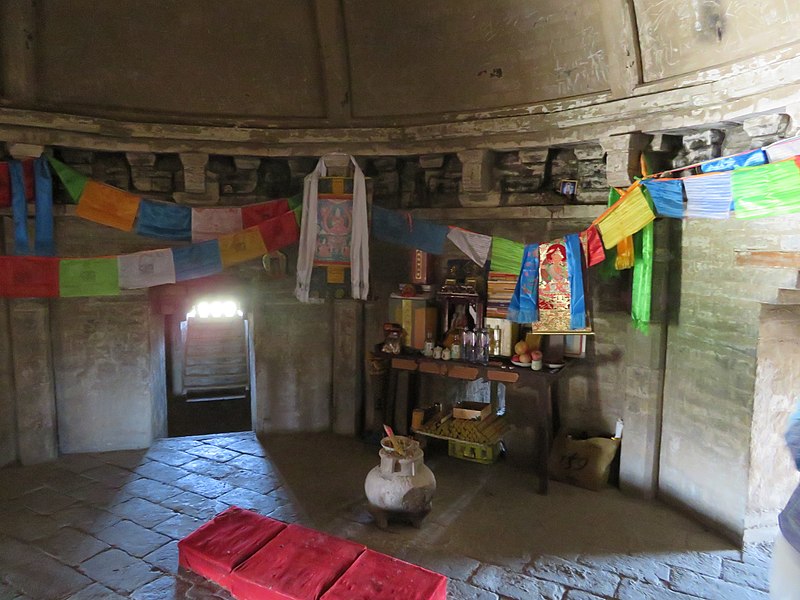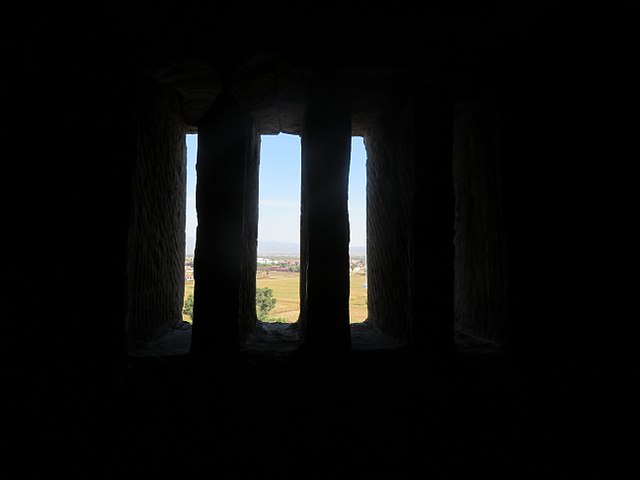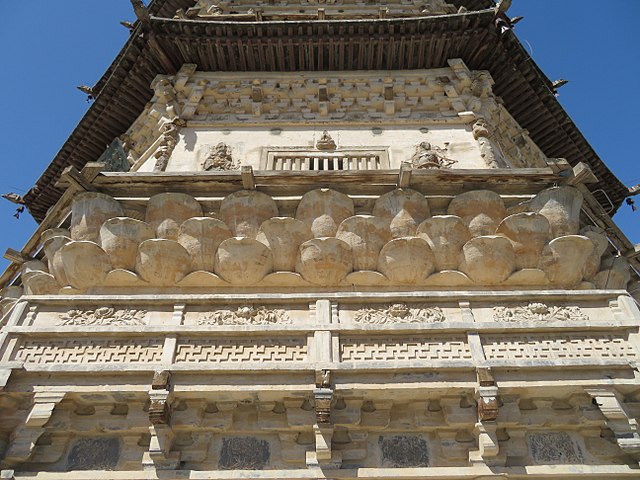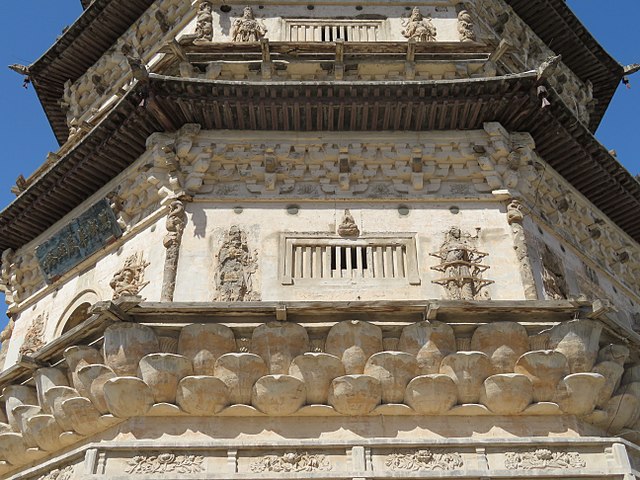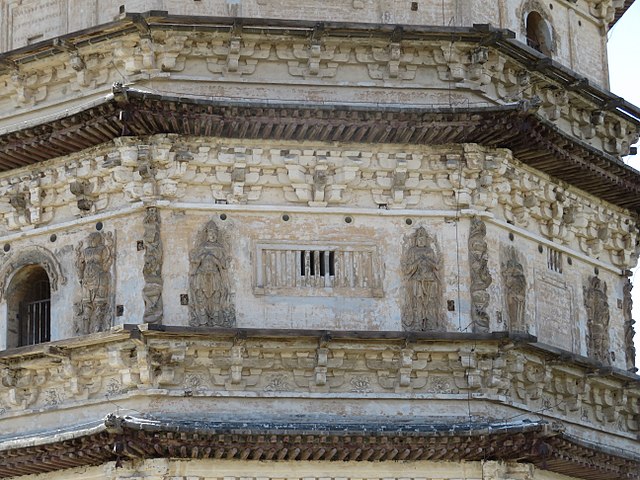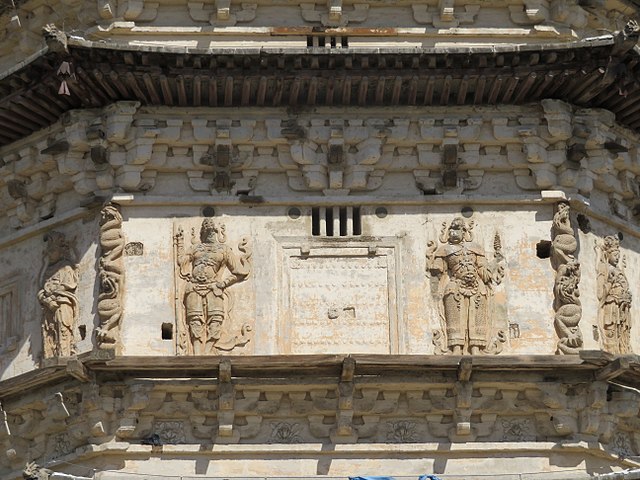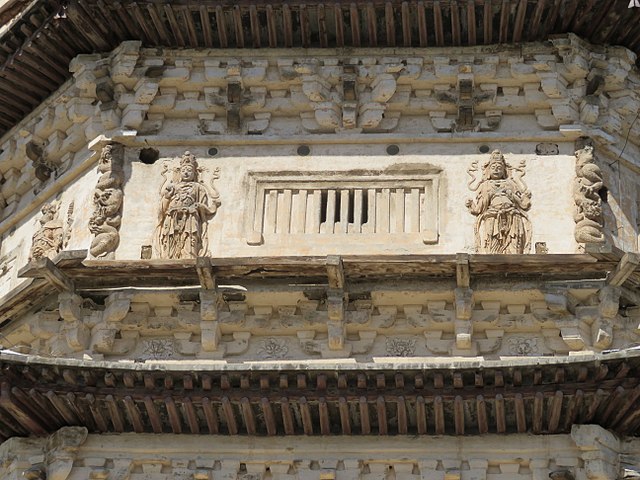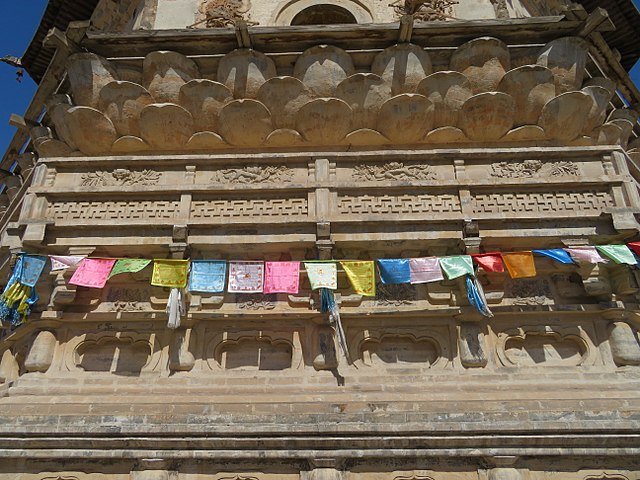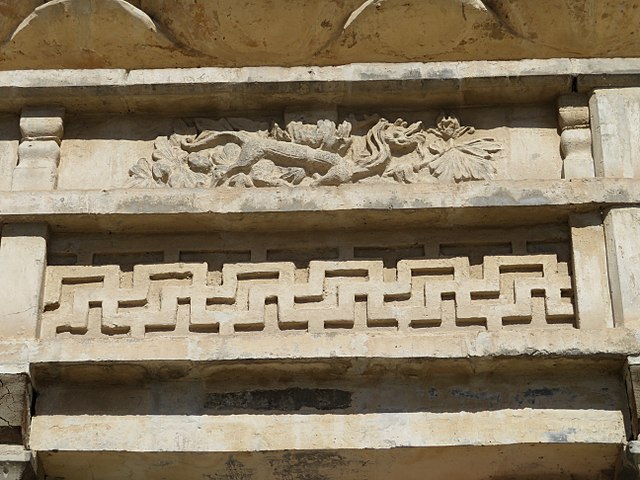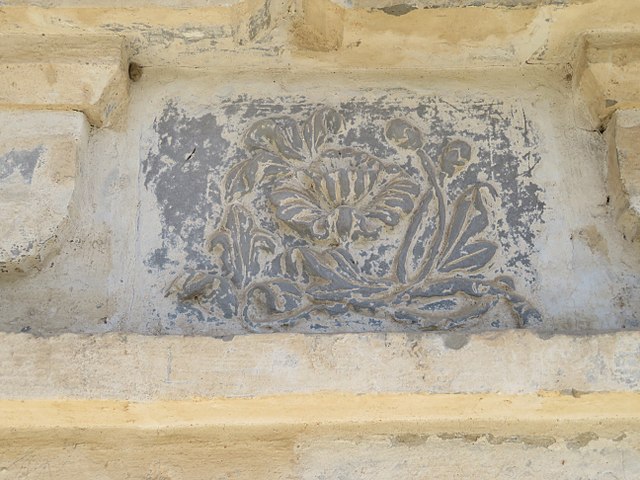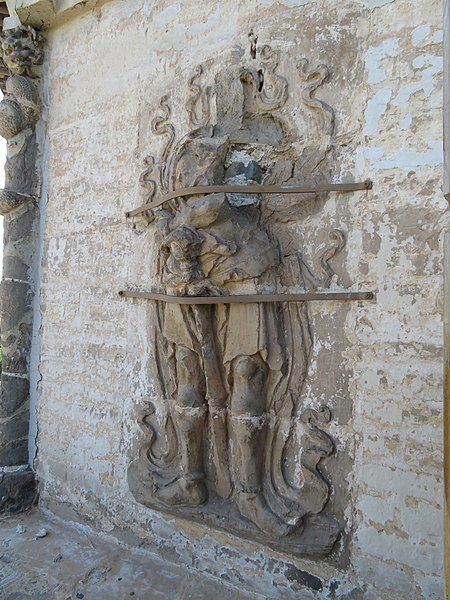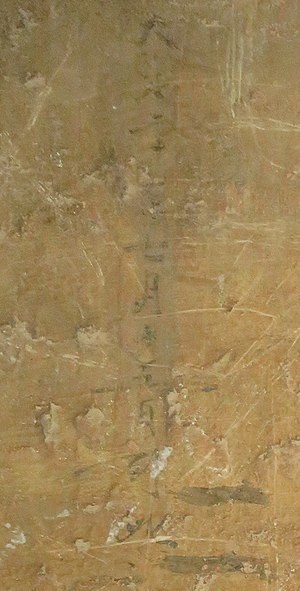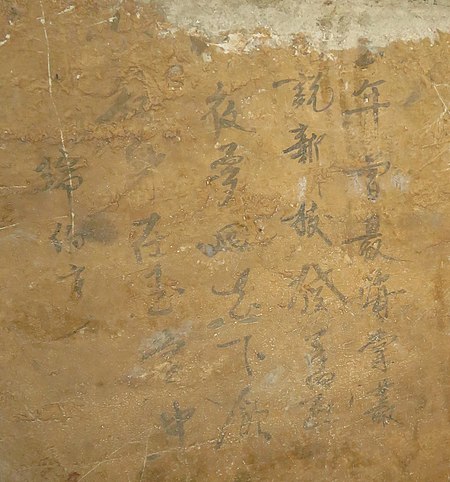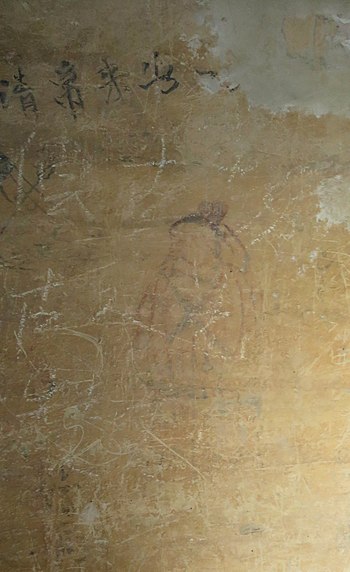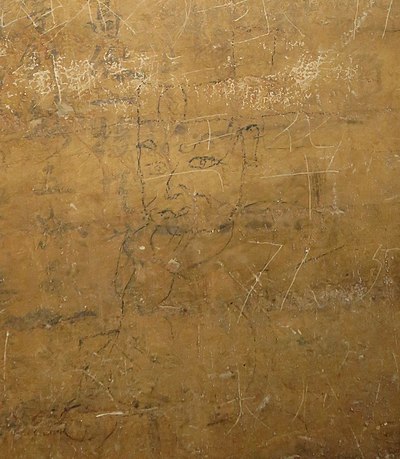Diary of a Rambling Antiquarian
Friday, 22 September 2017
Hohhot White Pagoda
About 16 km east of the centre of Hohhot (as the crow flies from my hotel just to the north of Manduhai Park by Inner Mongolia University), in a rural setting, is a famous Liao dynasty pagoda. It is officially known as the 10,000 Volumes of the Avataṁsaka Sūtra Pagoda (Wànbù Huáyánjīng Tǎ 萬部華嚴經塔), but locally everyone simply calls it the White Pagoda (Bái Tǎ 白塔). This is unfortunate, because the nearby Hohhot Airport is called Baita Airport (呼和浩特白塔国际机场), and when I try to explain to the taxi driver where we want to go he is certain that we want to go to the airport. When I insist that we don't want to catch a flight to anywhere he drives off. It takes another ten minutes and two more taxi drivers before we find one who knows what we talking about and is willing to take us there.
Google Maps view of the east of Hohhot
{Map data ©2019 Imagery ©2019 DigitalGlobal}
(The red tag marks the White Pagoda)
The pagoda is an octagonal seven-storey brick and wood pagoda, 55.6 metres high. It was built at the north-west corner of the Liao city of Fengzhou 豐州, just east of the modern city of Hohhot, although the boundary of Fengzhou cannot be easily discerned from the satellite image of the area. The exact date of the pagoda's construction is unknown, but it is thought to date to the middle or late Liao dynasty (916–1125).
Plan of Fengzhou

The pagoda is the red circle on the top left of the plan
Entrance ticket for the Wanbu Huayanjing Pagoda
The reverse is a prestamped postcard
The pagoda is hollow inside, and has entrances on the first storey at the north and south sides. The north entrance is accesssible via a wooden staircase. There is a corridor running around the circumference of each storey, and two sets of stone staircases leading up from one storey to the next. There are small windows on each storey, but most of them do not let much light in, so in most places the corridors and staircases are only very dimly illuminated. At the very top (7th storey) there is a small room which may once have housed the sutras that gives the pagoda its name.
View of the White Pagoda at Hohhot from the south
South side of the pagoda
With the pagoda name board: Wànbù Huáyánjīng Tǎ 萬部華嚴經塔
View of the White Pagoda at Hohhot from the east
Old photograph of Hohhot White Pagoda from the east or the west
Source: Brief Introduction to the White Pagoda p. 1
Staircase to first storey of the White Pagoda
Entrance into the White Pagoda
Inside the entrance into the White Pagoda

Staircases inside the White Pagoda
Room on the top floor of the White Pagoda
Window looking out of the White Pagoda
Sculptures
Like many Liao dynasty pagodas, the external walls of the pagoda are decorated with relief sculptures of Buddhist figures and motifs. The first two storeys have thirty-six sculptures of Buddhist figures in total, two standing figures on each face of each storey, and four additional small sculptures of seated buddhas above the windows on the minor sides of the first storey.
Details of pagoda showing relief sculptures on first two storeys
Sculpture of a dragon
Sculpture of a flower
Sculpture of a Buddhist guardian warrior on the first storey next to the north entrance
The sculptures on the first storey were damaged during the Cultural Revolution.
Graffiti down the Ages
What is remarkable about this pagoda is that the walls of the corridors are covered in graffiti, poetic inscriptions and drawings, dating back to the 12th century, in Chinese, Phags-pa, Tibetan, Uygur, Syriac, Khitan, and Jurchen scripts. Unfortunately it is very dark inside the pagoda because the tiny slit windows set back from the corridor by up to a couple of metres only let in a small amount of light, and so the inscriptions and drawings on the walls are at best dimly visible and more often totally invisible. Lacking one of those new-fangled telephone contraptions which other people used to light their way, I stumble around the inside of the pagoda, from bottom to top and then top to bottom, in the dark, randomly flash-photographing the walls in the hope that I would capture something interesting (wandering around the pagoda in the dark was very confusing, and I often lost count of what floor I was on, so some of my photo locations below may be wrong). Only later did I learn that you could rent a flashlight from the ticket office. Actually, my method of blind photography was not too bad, and I did manange to photograph a few interesting inscriptions, as shown below. Nevertheless, I failed to accidentally photograph any of the Jurchen or Khitan inscriptions I had read about, so I decide that I will buy a flashlight and return here again before I leave Hohhot.
Chinese and Phags-pa inscription on the 2nd storey dated 1326
Yuan dynasty inscription dated 1326 written in Chinese using Phags-pa script and Chinese characters. The title ("Precious Pagoda") is in Phags-pa only, and the date is in Chinese characters only, but the names of all the individuals who made this trip to the pagoda are given in both Chinese characters and Phags-pa script. Reading from left to right, the inscriptions read as below (the last two lines are missing in this photo):
ꡌꡓ ꡉ [paw tha = Chinese 寶塔 bǎo tǎ] ("precious pagoda")
裴脱歡察兒 = ꡌꡟꡠ ꡉꡡ ꡜꡡꡋ ꡅ ꡔꡞ [pue tʽo hon ča ži] (personal names: Pei Tuohuan and Cha'er)
趙十一 [Zhào Shíyī] = ꡆꡦꡓ ꡚꡞ ꡗꡞ [ǰėw ši yi] (a personal name: Zhao Shiyi)
泰定叄年二月日 [Tàidìng sān nián èr yuè rì] (On a day in the 2nd month of the 3rd year of the Taiding era [1326])
張狗兒 [Zhāng Gǒu'ér] = ꡆꡃ ꡂꡜꡞꡓ ꡔꡞ [ǰaŋ ghiw ži] (a personal name: Zhang Gou'er)
Inscription in Chinese dated 1180 on the 4th storey
Jin dynasty inscription in Chinese: "[Record of] coming here on the 25th (or 15th) day of the 7th month of the 20th year of the Dading era" (17 August 1180)
大定二十年七月廿五日到此[記]
Inscription in Syriac on the 3rd storey
Inscription in Syriac with the nišan mark of the Nestorian Christian Priest Särgis at the bottom
Inscription in Syriac on the 4th storey
Inscription in Syriac with the nišan mark of the Nestorian Christian Priest Särgis at the bottom:
[ܦܘ] ܢܝܫܐܢ ܡܢ ܣܪܓܝܣ ܩܫܝܫܐ ܢܝܢܓ ܐܘܠ
[pw] nyš’n mn srgys qšyš’ nyng ’wl
[bo] nišan min Särgis qašïša-nïŋ ol
This is my handmark, of the priest Särgis
Reading and translation from Pier Giorgio Borbone, Syroturcica 2: The Priest Särgis in the White Pagoda (Monumenta Serica 56 (2008): 487–503)
Inscription in Uyghur on the 2nd storey
Inscription in Chinese on the 4th storey
Drawing of a person on the 3rd storey
Drawing of a person on the 4th storey
Pagoda Revisited [2017-10-02]
As I promised myself, I did come back to the White Pagoda at Hohhot. After travelling to Bairin Right Banner and Bairin Left Banner for a couple of days, I arrived at Hohhot East railway station early Monday afternoon. My train to Hangzhou, from where I will go on to Ningbo, leaves at noon on Tuesday, which does not leave me much time in the morning to get the pagoda and back. So after I have checked into my hotel near the station, I find a taxi to take me to the pagoda. It is getting late in the afternoon when we arrive, and my driver is keen to finish work for the day and get home, so I promise I will not be long or else I will have to pay him extra (I need to pay him to wait for me as there is no other way of getting back to my hotel from here).
I spend just over an hour inside the pagoda, and meticulously photograph all the inscriptions I can see. And with my newly-purchased flashlight this time I am able to see what I am photographing. Of course neither my photography skills nor my camera are particularly good, but I still manage to get a hundred or so reasonable photographs. I have not yet had time to fully catalogue, identify and analyse all the inscriptions, but hope to publish them all on my BabelStone Blog in due course. Meanwhile here is a photograph I took of an inscription in cursive Jurchen. It is not easy to read.
Inscription in cursive Jurchen on the 6th storey
The modern mindless graffiti scratched inanely all over the pagoda walls, with a proud disregard for the thousand-year-old cultural and linguistic heritage they obscure, makes me angry and sad in equal measure. It would be a shame, but perhaps the only way to stop the barbaric onslaught of Chinese tourists eager to leave their mark everywhere they go, would be to restrict entrance to the inside of the pagoda to escorted groups, or to cover the ancient inscriptions with a perspex shield. Of course, the desire to carve or write your name on sites you visit is universal, and you see graffiti wherever you travel in the world, but the problem seems particularly acute here in China.
Inner Mongolia | Jurchen | Liao dynasty | Pagodas | Phags-pa
Index of Rambling Antiquarian Blog Posts
Rambling Antiquarian on Google Maps
